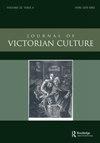‘Buy Cheap, Buy Dear!’: Selling Consumer Activism in the Salvation Army c. 1885–1905
IF 0.2
3区 历史学
Q2 HISTORY
引用次数: 1
Abstract
This article examines how the late nineteenth-century Salvation Army used consumer activism as a fundraising strategy, an impetus towards social change, and a means of consolidating its visible presence in public and domestic settings. It argues that the Salvation Army was unique in its combination of its own production systems with the creation and capture of an unusually far-reaching activist market. As much of its support came from lower-income communities, the Salvation Army developed ways to facilitate their participation in activist consumption. Harnessing consumer identity allowed the organization to cast its supporters as active participants, and both donations to and purchases from the Salvation Army were framed as positive changes in consumer behaviour connected to spiritual welfare. Much of this process was refracted through the Trade Department, which competed with secular sellers to produce a range of household essentials; but this also put pressure on the membership to use their consumer power to benefit the Salvation Army whenever possible. The article draws on the organization’s substantial periodical output to interrogate the communication strategies that underpinned these consumer engagement practices. It offers a comparative analysis of two examples of the Salvation Army’s commercial ventures during this period: the trading activities centred around the Trade Department, and the Darkest England Match Factory. It argues that while the Trade Department demonstrates the success of the organization’s own brand of accessible consumer activism, the match factory shows a failure in the communication strategies designed to win consumers for the Salvation Army cause.“买便宜,买贵!”:在救世军中推销消费者行动主义(约1885-1905)
这篇文章探讨了19世纪末的救世军如何利用消费者行动主义作为一种筹款策略,推动社会变革,并巩固其在公共和国内环境中的可见影响力。它认为救世军的独特之处在于,它将自己的生产系统与创建和占领一个意义非凡的活动家市场相结合。由于救世军的大部分支持来自低收入社区,救世军制定了促进他们参与积极消费的方法。利用消费者身份使该组织能够将其支持者塑造成积极的参与者,对救世军的捐款和购买都被视为与精神福利相关的消费者行为的积极变化。贸易部在很大程度上折射了这一过程,该部门与世俗卖家竞争生产一系列家庭必需品;但这也给会员国带来了压力,要求他们尽可能利用消费者的力量为救世军造福。这篇文章借鉴了该组织的大量定期产出,以探究支撑这些消费者参与实践的沟通策略。它对救世军在这一时期的商业冒险的两个例子进行了比较分析:以贸易部为中心的贸易活动和最黑暗的英格兰火柴厂。它认为,虽然贸易部证明了该组织自己品牌的无障碍消费者行动主义的成功,但火柴厂表明,旨在为救世军事业赢得消费者的沟通策略失败了。
本文章由计算机程序翻译,如有差异,请以英文原文为准。
求助全文
约1分钟内获得全文
求助全文

 求助内容:
求助内容: 应助结果提醒方式:
应助结果提醒方式:


